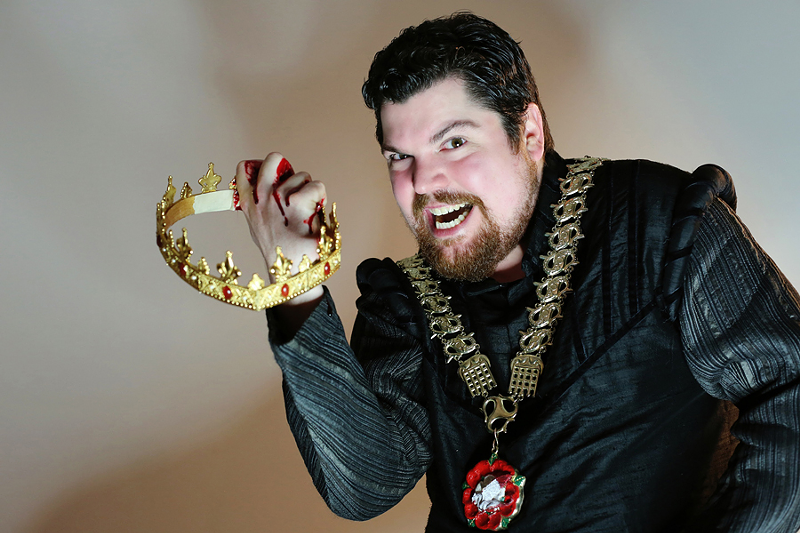So Shakespeare’s early plays drew on that history. Just as George R. R. Martin’s contemporary fantasy novels of battling dynasties have become the runaway hit TV series Game of Thrones, Shakespeare’s history plays tracing the clash of British royalty captivated audiences in Elizabethan times. In fact, these plays — Shakespeare’s earliest — paved the way for his subsequent illustrious career. They are the output of a young writer, but nevertheless full of remarkable poetry and distinctive characters.
One might liken the appeal of history plays in Shakespeare’s time to America’s ongoing fascination with the Civil War, during which loyalties were tested and families torn asunder. It’s also possible to see the appeal in artistic recreation of colorful historical and political figures.
Cincinnati Shakespeare Company is ready to complete its five-year project to stage all eight of Shakespeare’s history plays in chronological order: Henry VI: The War of the Roses, Part 2 is opening Friday and runs through Feb. 11; Richard III runs Feb. 17-March 11. CSC’s cycle began in 2013 with Richard II, the story of a king deposed in 1399. It continued with 2014’s Henry IV (two plays consolidated into one production), then 2015’s Henry V. A year ago it produced Henry VI: The Wars of the Roses, Part 1.
Three plays tell Henry VI’s story: CSC’s Part 1 encompassed all of Shakespeare’s first play and part of the second. In Henry VI: The Wars of the Roses, Part 2, we get the rest of the second and all of the third. The ambitious Duke of York, to be played by CSC veteran Giles Davies, has challenged the rule of Henry VI (Darnell Pierre Benjamin), who came to the throne as a child when his father, Henry V, died unexpectedly in 1422. The weak young king’s domineering and ruthless queen, Margaret of Anjou (Kelly Mengelkoch), often influenced his actions. Taking advantage of battles and chaos, Richard (Billy Chace), the hunchbacked Duke of Gloucester, begins his slow but inexorable rise to power.
CSC concludes this story with its upcoming staging of Richard III, in which Richard’s murderous manipulations finally place him on the throne. But before long, his tyrannical rule was opposed by fledgling Tudor claimants. His defeat in battle by Henry Tudor (who became Henry VII) launched the dynasty best known in Shakespeare’s time for Henry VIII (who reigned 1509-1547) and his daughter Elizabeth I, queen during most of the playwright’s London career.
The Tragedy of King Richard the Third, as the play was titled when it was first staged in the early 1590s, portrayed the king (he reigned 1483-1485) in such brutal, murderous and conniving terms that his reputation suffered for centuries. He came to light — literally, in fact — in 2012 when his skeletal remains, verified by DNA testing, were unearthed beneath a parking lot in Leicester, England. Not that he was buried in such an ignominious spot — it was once the site of a monastery, Greyfriars Priory. He died at the age of 32 in the nearby Battle of Bosworth Field on Aug. 22, 1485, the last king of England to die in battle on home soil.
With these productions, Cincinnati Shakespeare Company becomes just the second American theater company to complete the entire history cycle in chronological order. Producing Artistic Director Brian Isaac Phillips says, “Richard III is one of Shakespeare’s best-loved histories. Many people know Richard as the evil, hunchbacked king. Henry VI is performed less often, so our production gives audiences an exciting chance to get to know Richard as a young man and watch his progression through all the experiences that put him where he is at the start of Richard III.”
These productions are the culmination of focused ambition by CSC to rise to the peak of classic theater companies.
CONTACT RICK PENDER: [email protected]


